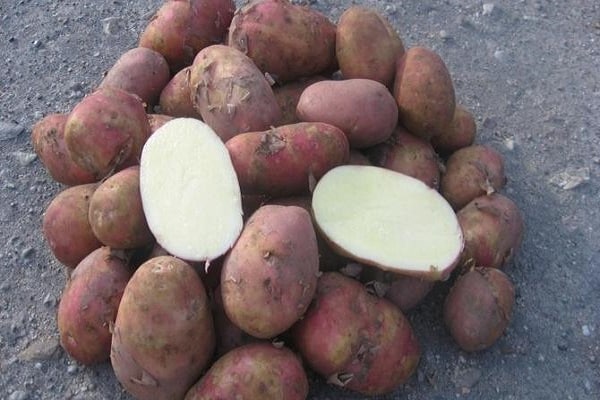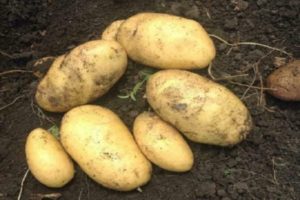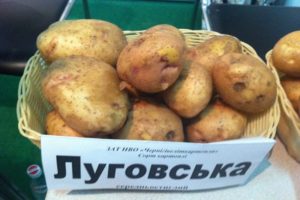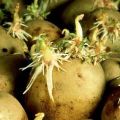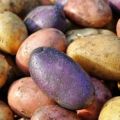Description of the potato variety Zhuravinka, cultivation and yield
In 2005, Belarusian breeders registered Zhuravinka potatoes. The new variety turned out to be very successful, not inferior in quality and yield to many Dutch varieties. Potatoes are officially approved for cultivation in the Volgo-Vyatka, Central and Northwest regions.
General characteristics of the variety:
- medium late;
- high marketable yield (177–242 kg / ha);
- medium tubers (90–140 g), oval-round, with small eyes, red;
- tasty, crumbly, with a high starch content (14.6–19.6%);
- the flesh is yellowish, does not darken for a long time in the air;
- suitable for the production of chips;
- excellent keeping quality (93%);
- resistant to disease;
- high marketability (83–96%).
In reality, this variety is successfully cultivated in most regions of the country.
Growing
Popularly, this potato variety is often called Zhuravushka. Bushes rarely form fruits, therefore Zhuravinka is rarely cultivated from seeds.
Medium late and not suitable for early growing. young potatoes seedling method. Peculiarities of cultivation of Zhuravinka are caused by increased tuberization.
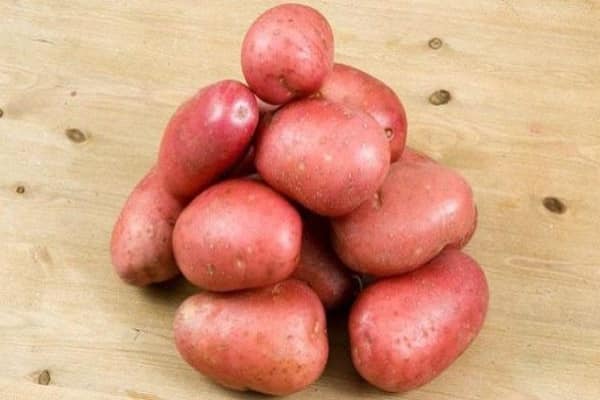
Seed material
Seed material is taken of medium size without signs of disease. Large potatoes can be cut and dried 2-3 days before planting. It is optimal to choose tubers weighing 80–100 g. Experienced vegetable growers mark the strongest, healthiest bushes even at the growing stage and take future seed material from them.

It is useful to "green up" seed tubers, for this, before storing them for a week, they are kept open to diffused sunlight.
It is better to store the selected potatoes separately from the rest of the vegetables and treat them with fungicides (“Maxim” preparation) before laying them.
25-30 days before planting, the tubers are sorted out and treated with a nutrient composition: 10 g of boric acid and 2 g of copper sulfate are stirred in 10 liters of water and sprayed.
Tubers are scattered in a single layer in a bright and warm place. After germination, the seed is sorted out again, sifting out potatoes with weak sprouts and signs of disease.
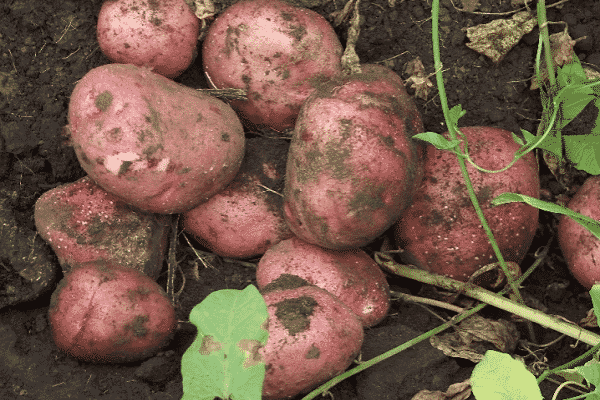
Site preparation
Potatoes are planted in a sunny area with neutral soil saturated with humus, no more than once every 4 years. Since autumn, the entire area is fertilized with manure and dug up. In the spring, the site is re-dug shallowly, compost, biohumus, and mineral fertilizers are added to the beds. In heavy soils, loosening components are introduced: straw, sawdust, peat, sand.
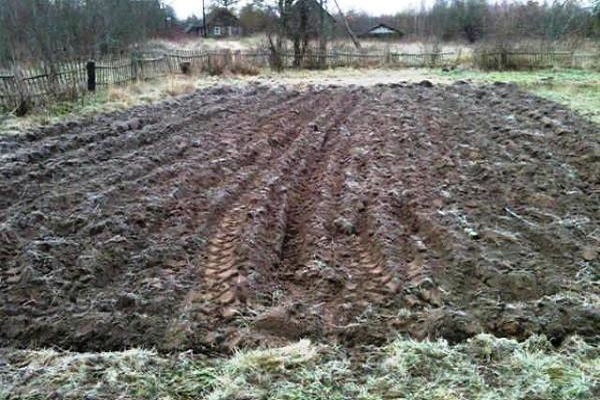
If there is a chance of infection potato nematode, it is useful to sow the area with winter rye in the fall, and in May to dig all the seedlings deeply.
After harvesting potatoes, it is better to immediately sow the soil with lupines, legumes, buckwheat. In the fall, all the seedlings are dug up. The farmers' comments on this "green" fertilizer are very enthusiastic. The structure of the soil is noticeably improved, it is saturated with organic matter and the balance of nutrients is restored.
Many vegetable growers practice planting in the aisles of potatoes plants that repel the Colorado potato beetle: beans, spinach, coriander, tansy, calendula.
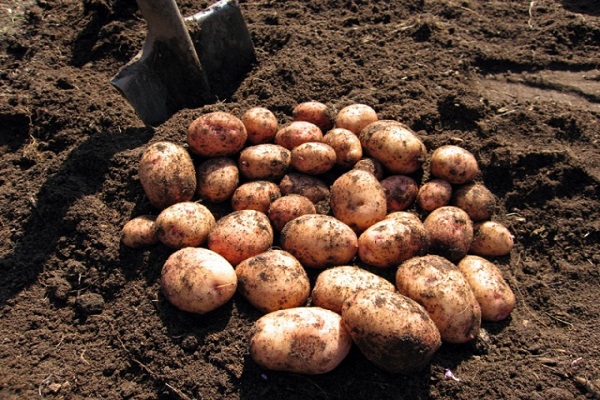
Planting and hilling
Potato variety Zhuravinka is picky about the volume of free soil for each bush. If the rows are placed too close to each other, the tubers will crawl out to the surface due to lack of space.
The recommended layout for this variety is 30 × 80. Planting times are different for each region, ranging from late April to mid-May. It is important that young seedlings do not catch the last frost.

A week after planting, the beds with potatoes are shallowly loosened so that the tubers receive enough oxygen.
When shoots reach 10-14 cm, the first hilling is carried out. If the days are dry and hot, the beds are watered a couple of days before so that the soil is soft and loose. Sprouts can be safely sprinkled with earth, leaving only the tops of the leaves. This will help the bushes to form more additional stolons on which the tubers will then tie. After 2 weeks, hilling is repeated.
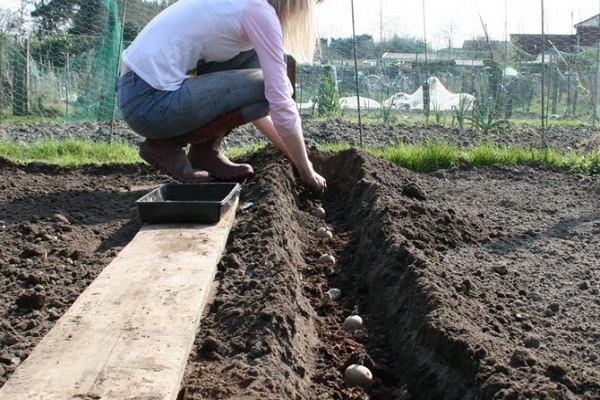
Description of the plant
Semi-erect bushes Zhuravinka usually reach medium size (50–55 cm), have medium-sized, slightly wavy leaves of a dark green color. The plant has a small corolla of reddish-purple color, rarely sets fruit. Tubers are red-pink in color with a rough skin.
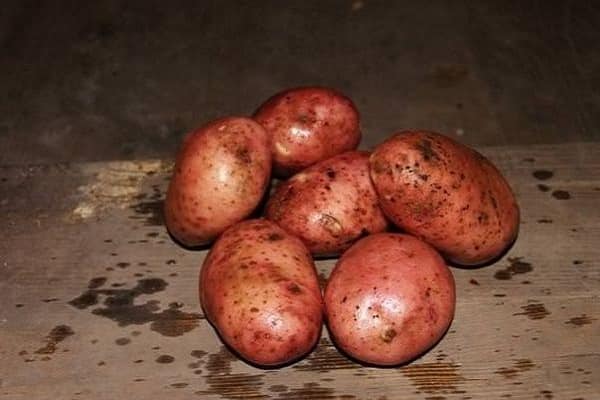
Disease resistance
The description of the variety from the Belarusian originators of Zhuravinka potatoes characterizes it as resistant to many common diseases:
- golden cyst nematode;
- common scab;
- potato cancer;
- blackleg;
- viruses X, M, S;
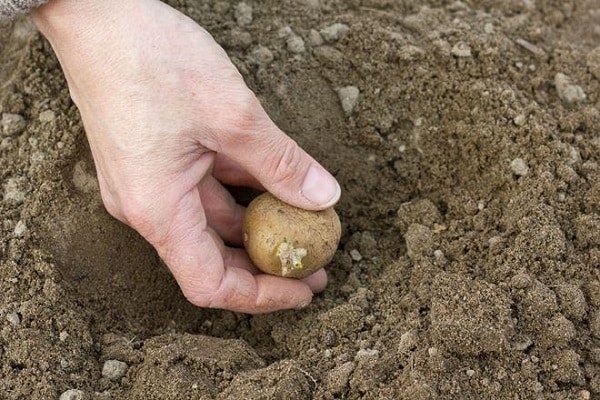
The variety has poor resistance to late blight of tubers and leaves, rhizoctonia, L, Y viruses.
Watering
Watering the potatoes before tuber starts should be moderate. Usually, precipitation still falls frequently at this time. Bushes begin to bloom simultaneously with the formation of tubers. From this moment on, the watering of the potato beds Zhuravinki is increased, the soil moisture is kept in the range of 80–85%. This is a prerequisite for the normal growth of tubers.
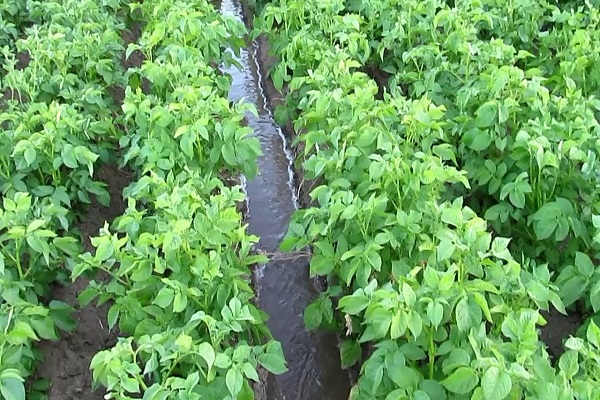
Top dressing with fertilizers
The multitubular variety Zhuravinka requires increased nutrition and organic-rich soils, but it does not tolerate excess nitrogen very well. Root feeding is carried out in the evening after watering before hilling and during flowering.
In 10 liters of water, 1 liter of mullein or dung is diluted and 2 tablespoons of superphosphate are added. 1 liter of fertilizer solution is poured under each bush.
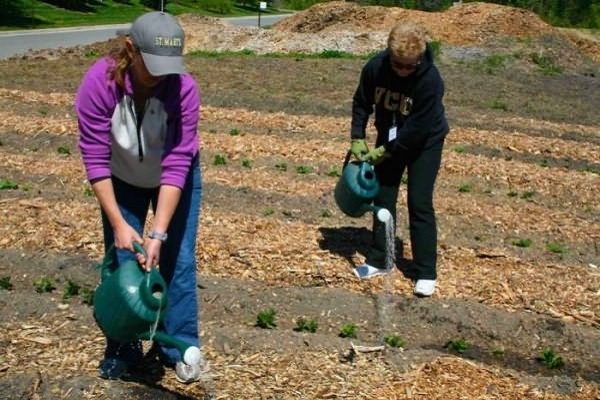
Before flowering, foliar feeding is useful. For this, the bushes are sprayed in the evening with a solution of 10 liters of water and 300 g of urea. Can be replaced with infusion of 100 g of ash in a bucket of water.
Harvest
Two weeks before the planned harvest of potatoes, the tops are mowed and harvested outside the site. During this time, the tubers form a thicker and coarser skin. When harvesting, such tubers are less injured, they are better stored and contact of tubers with possibly infected tops is excluded. For harvesting it is better to choose a dry sunny day. Dug out potatoes are dried for 3-4 hours under the sun. When harvesting in rainy weather, the tubers are dried for a week under a canopy.
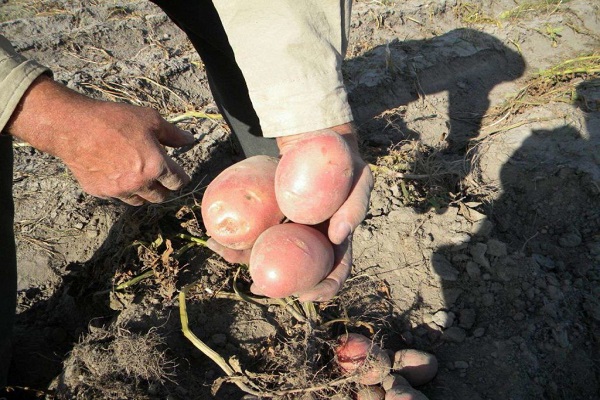
Storage
Before storing, all tubers are carefully sorted out. Potatoes with mechanical damage, signs of disease, too small to be put aside for fast consumption.The healthiest medium-sized tubers are selected in separate planting boxes for the next season.
The rest of the potatoes are stored in a ventilated basement at a temperature of 2-3 ° C. Relative humidity should be 80–85%, for seed it is better than 90–95%.
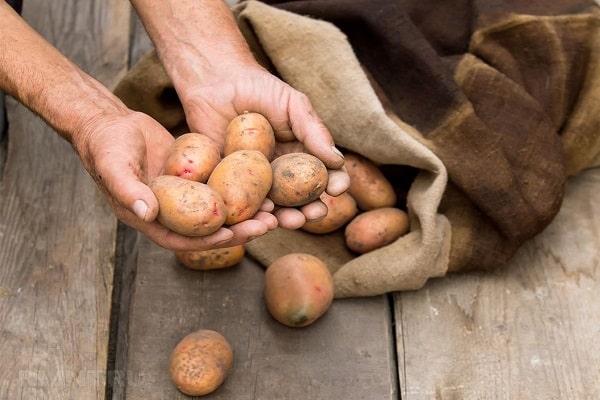
A month before storage, the room is treated with an antiseptic: 400 g of bleach is dissolved in 10 liters of water, defended and the structures are sprayed with a liquid without sediment.
Taste qualities and reviews
Many vegetable growers and potato lovers liked the crane. The yellowish flesh has a pleasant potato sweetness, suitable for making delicious mashed potatoes and frying. The high content of starch makes Zhuravinka nutritious with a rich taste. Peeled tubers do not darken for a long time in the air. In industry, this variety is used in the production of chips. Potatoes lie well and do not lose their taste during the entire storage period.
Reviews of vegetable growers about growing Zhuravinka are most often positive. The variety continues to gain popularity every season. Vegetable growers note an excellent yield, each bush stably lays 15–20 tubers. With timely watering and feeding, almost all potatoes reach marketable size. Smooth oval-rounded reddish tubers have a high marketability.
